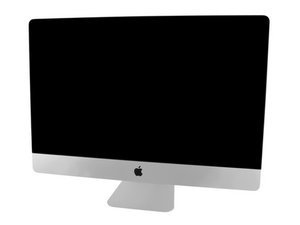Can an SSD SATA drive be added to a 5K 2017 iMac that has a SSD blade?
I am wondering if the motherboard of a 2017 iMac, which is using the PCIe port for a 2 TB SSD blade, does it have another drive port (SATA) available to add a typical SSD drive?
If there is, is it where the mechanical portion of a fusion drive would be hooked up? Will a SSD drive attached to that port be seen by the system as an additional drive or as some type of extension of the current 2 TB SSD blade?
Thanks
Is dit een goede vraag?


 35
35  329
329  970
970 
1 Opmerking
Reference the previous version for the needed guides iMac Intel 27" Retina 5K Display (Late 2014 & 2015)
Here's your systems specs: iMac 27" (5K, Mid-2017) iMac18,3
door Dan